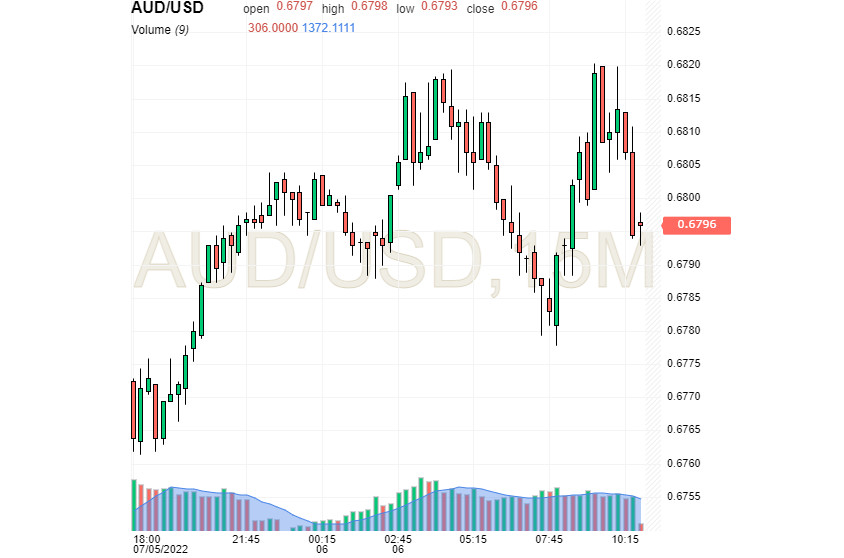

The Australian dollar is experiencing another decline, having lost hope of recovery after the central bank's decision on the key rate. According to analysts, its increase did not help the aussie, and the currency's positive trend remained out of reach.
The Australian currency collapsed immediately after the decision of the Reserve Bank of Australia (RBA) to raise interest rates by 50 bps. However, in the future, the aussie recovered, although it is far from consolidating in an upward trend. After the central bank's statement, market participants began selling off the Australian dollar, fearing a possible recession and economic instability.
A day earlier, on Tuesday, July 5, the aussie showed a downward trend against its American competitor in the AUD/USD pair, correcting after a short-term growth. In the future, the pair was trading around 0.6810, approaching a multi-year low of 0.6760, recorded at the end of last week.
The Australian dollar took a defensive position on Wednesday, July 6, amid market concerns about the global recession and rising commodity prices. The AUD/USD pair was cruising near the 0.6796 mark, trying to gain a foothold in the current positions.

Amid increasing anxiety about the recession, investors lowered expectations for a sharp increase in interest rates. At the same time, market participants revised their forecasts about the RBA's significant increase in rates in the near future. Recall that the central bank's management decided to raise the key rate (OCR) by 50 bp, to 1.35%. Experts consider this to be the highest figure since May 2019. It should be noted that for the first time the central bank raises the rate by 50 bp twice in a row.
Most economists doubt the overly hawkish attitude of the RBA, believing that the central bank will refrain from further rate hikes in the near future. This is facilitated by reports from representatives of the department, in which members of the central bank predict a softening of inflation in 2023. If such a scenario is implemented, rate manipulation will not be needed, experts are certain. However, currency strategists at HSBC bank enable a rate hike by the RBA, as they doubt that Australian households will cope with the rising cost of borrowing. In August of this year, HSBC expects an increase in the rate by another 50 bps, then the central bank will take a pause, and in the fourth quarter of 2022 and in the first quarter of 2023, the RBA cash rate will reach 2.6%, experts sum up.
Many analysts agree with HSBC's position and expect an additional increase in the RBA rate (by 50 bps). A similar scenario may be launched from July 27, after the release of the Australian consumer price index for the second quarter of 2022. Note that the RBA's target is a rate of 2.85%. The central bank plans to achieve this indicator by the end of this year.
Some experts expect another RBA rate hike in September and November 2022 (by 25 bp). At the moment, the central bank has made minimal changes to the final paragraph of its report, which confirms a further rise in interest rates. At the same time, the size and timing of future interest rate hikes will be determined by current macro data and an assessment of inflation and labor market prospects. According to the central bank's forecasts, inflation will peak at the end of 2022, and in 2023 it will decrease again to the level of 2-3%.
The current situation casts doubt on the immediate prospects of the Australian dollar. According to analysts, the wobbly dynamics of the aussie does not allow the latter to make a breakthrough. At the same time, the decision of the RBA on the rate did not have a significant impact on the AUD. As a result, it is difficult for the aussie to determine the direction, and the current RBA strategy does not allow it to benefit from the central bank's decision.
According to preliminary forecasts, the RBA will tighten its monetary policy in the coming months, but not too much. However, this will not help the further growth of the AUD, analysts at Commerzbank are sure. At present, the Australian dollar is subject to external factors, such as the outlook for economic development in China and the likelihood of a recession. If tension persists on world markets, the Australian dollar will remain under pressure, experts conclude.

QUICK LINKS